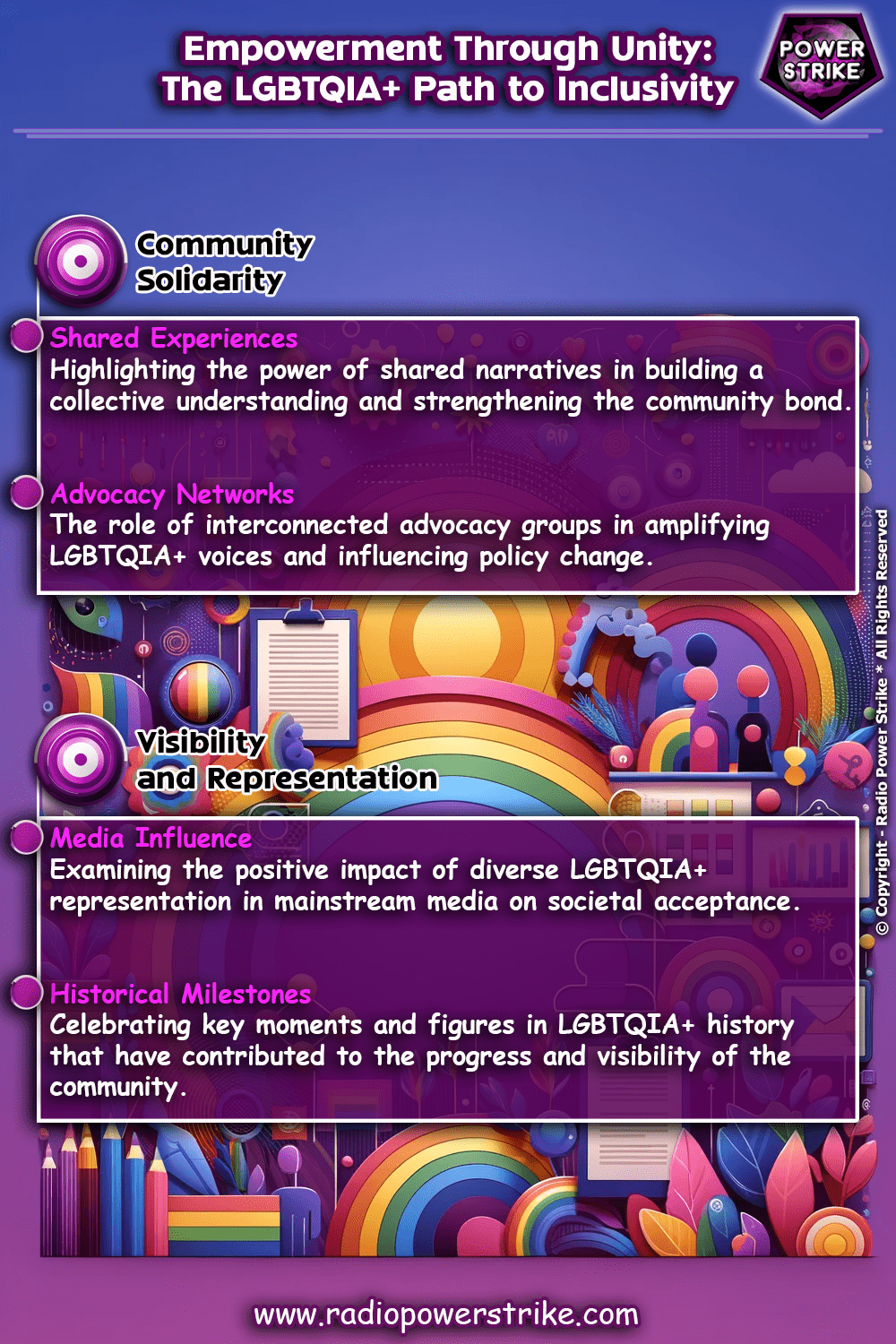Rainbow Resilience: Overcoming Adversity in the LGBTQIA+ Community
The Triumphs and Challenges of the LGBTQIA+ Journey

The LGBTQIA+ community, symbolized by the vibrant hues of the rainbow, has faced its share of storms. From societal discrimination to personal struggles, their journey is marked by challenges. Yet, like a rainbow that emerges after the rain, the community’s resilience shines brightly, illuminating their path of triumphs and unity. This article delves into the adversities faced by the LGBTQIA+ community and celebrates their indomitable spirit.
The Landscape of Challenges
The LGBTQIA+ community has historically faced a myriad of challenges. Discrimination, prejudice, and even violence have been common experiences for many. Legal battles, from marriage rights to workplace discrimination, have been fought passionately, often against a backdrop of societal resistance.
In many parts of the world, LGBTQIA+ individuals still grapple with laws that criminalize their identities. The fear of persecution, rejection, and even violence is a daily reality for many. Moreover, the intersectionality of identities, such as being LGBTQIA+ and belonging to a racial or ethnic minority, can compound these challenges.
Yet, despite these adversities, the community has showcased remarkable resilience, turning challenges into opportunities for advocacy, awareness, and change.
Unity in Diversity
One of the most significant strengths of the LGBTQIA+ community is its unity. Despite the diverse spectrum of identities within the community, there’s a shared understanding and empathy. Pride parades, LGBTQIA+ events, and community centers offer safe spaces where individuals can find support, acceptance, and camaraderie.
This unity is not just limited to physical spaces. Online platforms and social media have played a pivotal role in connecting the community globally. Digital spaces offer a haven for those who might feel isolated in their immediate surroundings, providing a platform for shared stories, resources, and support.
Furthermore, allies of the community, from friends and family to public figures, amplify the voices of LGBTQIA+ individuals, advocating for rights, acceptance, and understanding.

Triumphs Amidst Adversity
The journey of the LGBTQIA+ community is marked by numerous triumphs. Legal victories, increased representation in media, and societal shifts towards acceptance are testaments to their resilience. Activists, both past and present, have paved the way, challenging norms and advocating for change.
Organizations and initiatives dedicated to LGBTQIA+ rights have made significant strides in areas like mental health, workplace rights, and youth support. Moreover, the community’s influence in arts, culture, and politics has led to broader societal recognition and appreciation.
While challenges persist, the trajectory is one of progress, with each victory, no matter how small, contributing to a larger narrative of hope, acceptance, and change.
The LGBTQIA+ community’s journey, marked by challenges and triumphs, is a testament to their resilience and unity. As society continues to evolve, the hope is for a world where every individual, irrespective of their sexual orientation or gender identity, is celebrated for their authenticity. The rainbow, in all its vibrant hues, stands as a symbol of this hope and the enduring spirit of the LGBTQIA+ community.

Glossary
Pride Parades
Events celebrating the LGBTQIA+ community’s diversity, visibility, and rights through public demonstrations, including marches and festivals.
Intersectionality
A concept used to describe the interconnected nature of social categorizations such as race, class, and gender, which create overlapping and interdependent systems of discrimination or advantage.
Advocacy
The act of speaking, writing, or acting in favor of a cause, policy, or group of people. In the context of LGBTQIA+ rights, advocacy can involve a range of activities from campaigning to education.
Cisgender
Refers to individuals whose gender identity matches their birth-assigned sex.
Non-binary
An umbrella term for gender identities that are not exclusively masculine or feminine and exist outside of the binary gender framework.
Genderqueer
A non-normative gender identity or expression that may not fit within traditional binary gender categories of man or woman.
Allies
Individuals who support and stand up for the rights and dignity of LGBTQIA+ people, often advocating for equal rights and fair treatment.
Frequently Asked Questions
What is the significance of Pride Parades?
Pride Parades are vital for advocating LGBTQIA+ rights, celebrating community identity, and promoting visibility and acceptance.
How does intersectionality affect the LGBTQIA+ community?
Intersectionality acknowledges that LGBTQIA+ individuals face multi-faceted discrimination, shaping their experiences and struggles for equality.
What are some ways to advocate for LGBTQIA+ rights?
Advocacy can include educating oneself and others, participating in events, supporting relevant legislation, and challenging discriminatory practices.
What does being cisgender mean?
Cisgender people have a gender identity that aligns with the sex they were assigned at birth.
Can you explain non-binary and genderqueer identities?
Non-binary and genderqueer identities are those that fall outside the conventional categories of male or female, reflecting a spectrum of gender experiences.
How can workplaces be more inclusive for LGBTQIA+ employees?
Workplaces can foster inclusivity by implementing non-discriminatory policies, offering diversity training, establishing LGBTQIA+ affinity groups, and creating a culture of openness and respect for all employees regardless of their gender identity or sexual orientation

Comments are closed, but trackbacks and pingbacks are open.